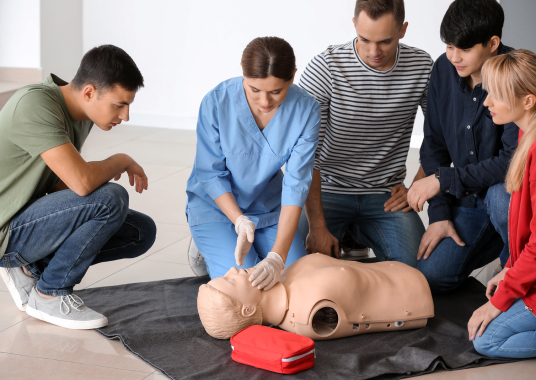CPR, First Aid, BLS, ACLS, PALS certifications.


Get certified in Adult, Child, and Infant CPR, First Aid, and Bloodborne Pathogens with our 100% online combo course. Complete it in just 2 hours and receive instant certification, unlimited quiz retakes, and mailed wallet cards—valid for 2 years for CPR/AED and First Aid and 1 year for Bloodborne Pathogens.
Our online CPR/AED First Aid certification combo course includes Adult, Child and Infant CPR and First Aid training. The combo certification is valid for 2 years and includes a free mailed in wallet card. Led by OSHA certified instructors, our online CPR classes curriculum is advanced Read More and follows ECC guidelines to help you save lives. Read Less
| Chapters | CE Credits | Validity | Cost | Duration | ECC | Exam Attempts | Wallet Card |
|---|---|---|---|---|---|---|---|
| 24 | 6.0 | 2 Years | $36.95 | 2-3 Hrs | Compliant | Unlimited | Download/Print/Mail |
Whether you’re at home, traveling, or on the job, bites and stings can happen when you least expect them. This section of your CPR and First Aid Online Training teaches you how to recognize different types of bites and stings and how to respond quickly and safely, especially if the reaction is severe or life-threatening.

Bites and stings are common injuries that can range from mild to serious. While some may only cause redness or itching, others can trigger allergic reactions or introduce dangerous bacteria or venom into the body. Recognizing the signs and knowing how to act is a vital part of Online CPR and First Aid Certification.
People can experience bite or sting emergencies from a wide variety of sources, including
Knowing what to look for helps you assess how serious the situation is. Symptoms may include:
In your Online CPR/AED and First Aid Course, you’ll learn the following steps for bite and sting emergencies: